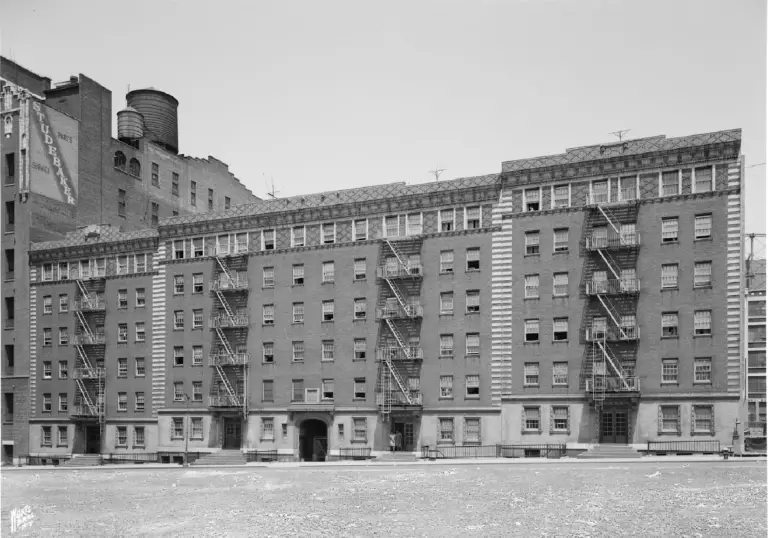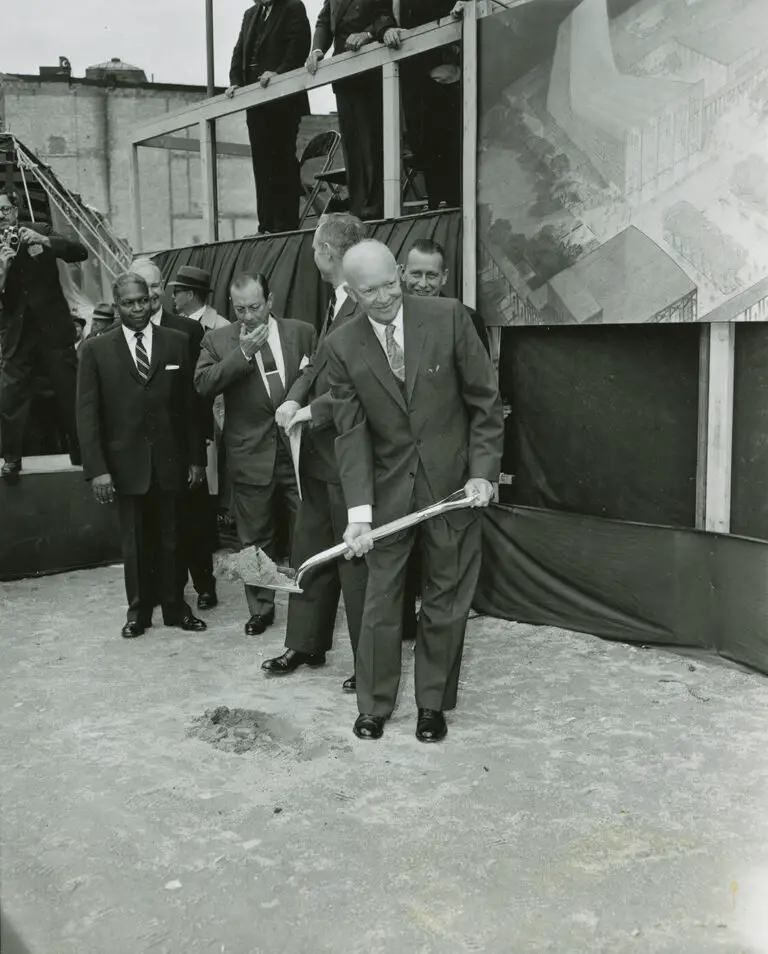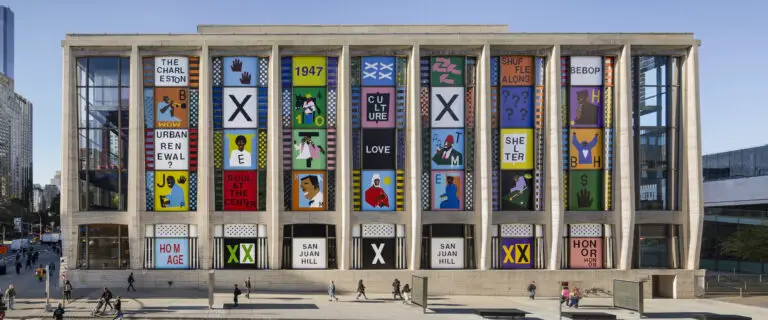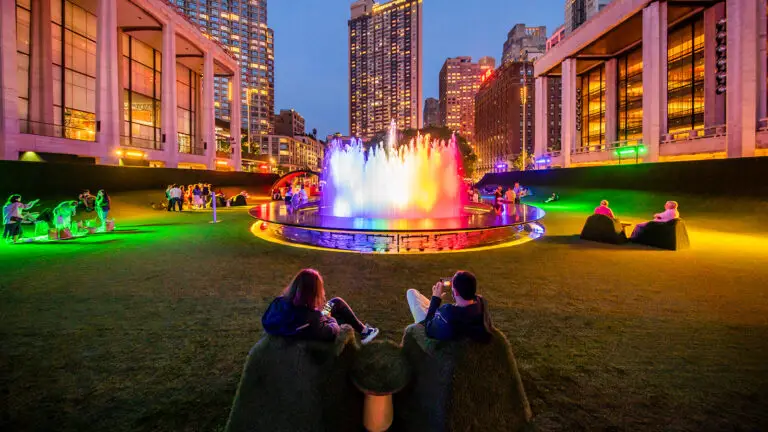Lincoln Center for the Performing Arts occupies a three-block area of the Upper West Side of Manhattan, bordered by Amsterdam and Columbus Avenues to its sides, and 62nd and 65th Streets at its top and bottom. 80 years ago, this area had a different name: San Juan Hill.

San Juan Hill was a vibrant, predominantly Black community in Manhattan, inhabited by over 7,000 families and 800 business who were later displaced by “urban renewal” efforts. These efforts, led by the infamous Robert Moses, targeted San Juan Hill as a slum to be cleared, citing loosely hidden racial prejudices angled to improve the city’s appeal to middle-class white Americans.
Up until its destruction, San Juan Hill was a thriving Black neighborhood with great pride. The neighborhood is cited as the birthplace of Bebop music and The Charleston. Notable residents included pianists Thelonius Monk and James P. Johnson, as well as Arctic explorer Barbara Hillary, the first Black woman to reach the North and South Poles.
Robert Moses spearheaded numerous programs similar to slum clearance. He served as the Secretary of State of New York from 1927-1929, and despite never being elected to an office, he is regarded as one of the most influential figures in the history of New York City. When FDR’s New Deal freed up millions of dollars for infrastructure projects, Moses planned out systems of parks, swimming pools, expressways, and bridges across New York City, many of which still stand today.
In addition to these efforts to expand New York’s community spaces, Moses began the slum clearance projects, based on the idea of eradicating what he viewed as “blight.” He served as Chairman of the Committee on Slum Clearance in New York City, and used the precedent of eminent domain to seize San Juan Hill and declare it an unlivable slum. The neighborhood was flattened, and the City of New York broke ground on May 14, 1959 to begin the construction of Lincoln Center for the Performing Arts.

Bob Serating, 05-14-1959
When Lincoln Center was built, the poignant Opera House that faces Columbus Avenue was built with its back to the Amsterdam Houses, a public housing development on a neighboring block to its west. Musician Etienne Charles, in conversation with NPR, pointed this out. “You can make huge statements with architecture. It’s body language with bricks.”
As it stands today, Lincoln Center hosts the country’s highest caliber of performing arts, including the New York Ballet, New York Philharmonic, and the Metropolitan Opera. Nevertheless, as it continues to celebrate that excellence, the development stands as a reminder of the thriving neighborhood that once existed on those blocks.
Today, on West 65th Street, a 150-foot mural spans the side of David Geffen Hall, commemorating San Juan Hill, the artistry that was born there, and the people who were ultimately displaced by the construction of Lincoln Center. Created by Nina Chanel Abney, the mural was commissioned by Lincoln Center alongside The Studio Museum in Harlem and Public Art Fund.

The abstract, colorful work centers words such as “homage,” “honor,” and “culture,” a commemoration of San Juan Hill that reminds passersby of the rich history that stood on the ground now occupied by Lincoln Center. The title of the work – San Juan Heal.
In addition to installations like San Juan Heal, Lincoln Center is taking initiative to create an inclusive and relaxed atmosphere for the community. Henry Timms was appointed as President and CEO of Lincoln Center in 2019. Under his leadership, the organization began summer programs like Summer For The City, and expanded the repertoire and diversity of music and art performed at the Lincoln Center venues.
Timms began the Summer For The City festival in 2022, aiming to help “loosen up” the performing arts center. For much of the summer during the inaugural celebration, its regal campus was covered in turf carpeting, eclectic seating options, and in 2023, a sea of pink plastic flamingos.
After years of exclusivity, it is safe to say that Lincoln Center is beginning to loosen up and turn away from the stuffy elitism that infused the highest-brow of American performing arts.

The original Lincoln Center festival was discontinued before Timms arrived on scene, citing quality over quantity of programming. This also came with the scrapping of a diverse selection of performances coming from all around the world, showcased each summer at Lincoln Center.
In the years after, the team decided to focus on the Mostly Mozart Festival, an annual summer selection of performances by orchestras from across the country. In 2023, the festival was led by Jonathon Heyward, the first Black music director of the Baltimore Symphony Orchestra and the youngest music director of any major orchestra in the United States.
Lincoln Center began in direct opposition to the Black communities it flattened in order to be built. For years, it stood for the elite, the exclusive, and predominantly, the white. To casual passersby, the mural remembering San Juan Hill by the organization that facilitating the neighborhood’s demise gives due pause to the integrity of the installation. However, as the organization begins to reflect on this troubled history and implement changes and programming to address it, reconciliations are slowly making way.
Journeying back to San Juan Hill evokes a rich history somewhat forgotten by the upscale neighborhood of Lincoln Square. Looking back once again, the native Lenape people of the region also have claim to the area. In realizing a community once neglected, another is regrettably pushed to the side, but as Lincoln Center begins to grapple with the colonizing history it stands for, the native people of Manahatta still await.


Comments are closed.